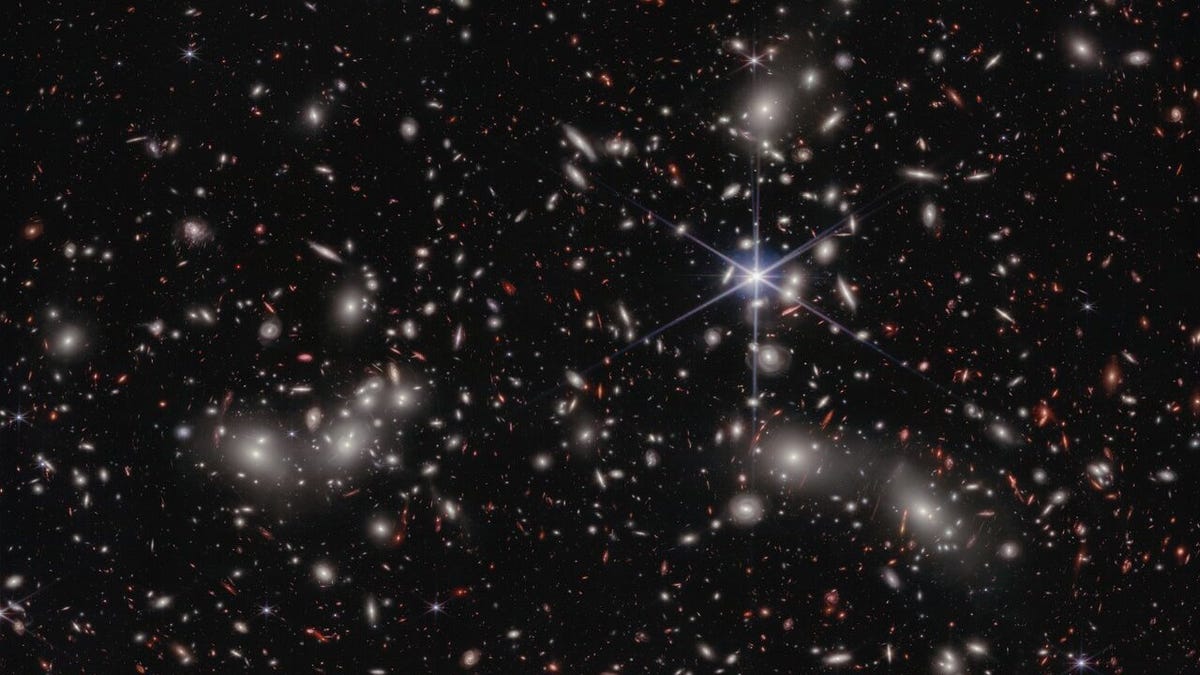NASA's Webb Space Telescope Reveals Brand New Details of Pandora's Cluster
"We had to remind ourselves that this was real data, and we are working in a new era of astronomy now."

A cropped view of Webb's image of Pandora's Cluster shows a complex landscape of galaxies.
There are galaxies. Then there are galaxy clusters, which are made up of hundreds to thousands of galaxies held together by gravity. Then there are galaxy megaclusters -- a cluster of clusters, if you will. A new James Webb Space Telescope image reveals never-before-seen details of Pandora's Cluster, a megacluster where three galaxy clusters are merging.
Pandora's Cluster is already a cosmic superstar because of gravitational lensing, a phenomenon that allows astronomers to use a galaxy cluster like a giant magnifying glass to view more distant objects behind it. The new image is a team effort from Webb's infrared vision and the megacluster. NASA estimates there are 50,000 sources of infrared light in the view, including many faraway galaxies made visible by the lensing effect.
Webb's deep-field view of Pandora's Cluster reveals layers of objects, from a foreground star to magnified distant galaxies that have been distorted into arc-like forms.
"When the images of Pandora's Cluster first came in from Webb, we were honestly a little star struck," astronomer Rachel Bezanson of the University of Pittsburgh said in a NASA statement on Wednesday. "There was so much detail in the foreground cluster and so many distant lensed galaxies, I found myself getting lost in the image. Webb exceeded our expectations."
The magic is in the layers. Here's a zoomable version of the image. Some of the distant galaxies look like little arcs of light. "The galaxy cluster 'lens' is so massive that it warps the fabric of space itself, enough for light from distant galaxies that passes through that warped space to also take on a warped appearance," NASA said.
It took Webb about 30 hours of observing time with its Near-Infrared Camera (NIRCam) to capture the data for the image. It's a first-blush look at an intriguing region of space. Astronomers will conduct follow-up observations to learn more about some of the lensed galaxies, giving scientists a peek into part of the early universe.
The Pandora's Cluster image is a testament to Webb's versatility. We've seen some glorious galaxy closeups and nebula glamor shots from the telescope, but this view is called a "deep field," meaning it's gazing deep into space to see distant, faint celestial objects.
Webb is a joint project from NASA, the European Space Agency and the Canadian Space Agency. "My first reaction to the image was that it was so beautiful, it looked like a galaxy formation simulation," said astronomer Ivo Labbe of the Swinburne University of Technology. "We had to remind ourselves that this was real data, and we are working in a new era of astronomy now."

